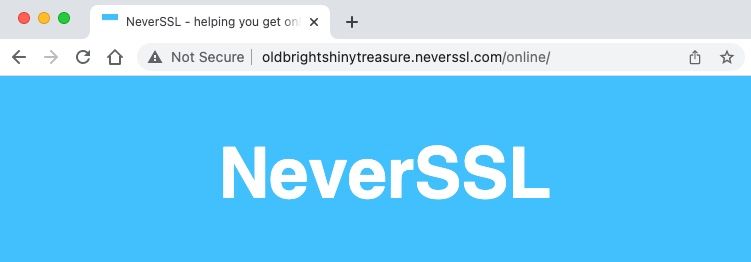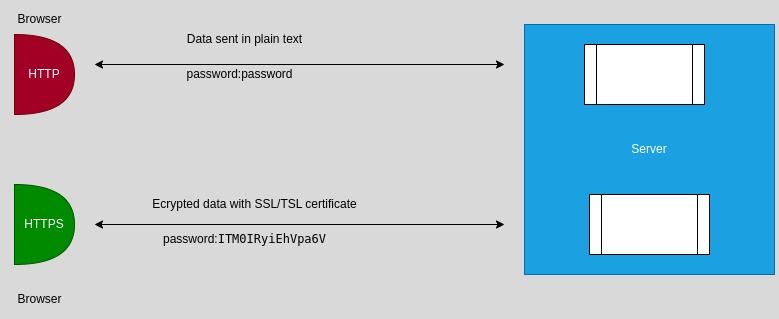On the internet, you will notice that URLs begin with either http: or https:. Websites use HTTP protocols to exchange information between servers and clients.
The additional "s" makes a big difference between the two protocols. HTTP and HTTPS differ in configuration and use cases. Learn the difference between the two and how to apply them in development.
What Is HTTP?
HTTP (HyperText Transfer Protocol) is an internet protocol. It facilitates the communication between servers and clients that supports the WWW (World Wide Web). Web clients are devices like home computers and mobile phones that act as consumers. Meanwhile, servers manage and store data and information, providing it on demand.
Web clients and servers communicate when a client sends an HTTP request. HTTP transfers the request to the server and then transfers a response back to the client. HTTP communication involves several standards that determine how information is exchanged. These include HTTP methods to describe the nature of a request that a client makes.
If you were to search for "What is HTTP/3" on the MakeUseOf website, the request will include information similar to this:
Request URL: https://www.makeuseof.com/search/?q=What+Is+HTTP%2F3%3F
Request Method: GET
Status Code: 200
Remote Address: 52.223.42.198:443
Referrer Policy: no-referrer-when-downgrade
Most of this information is in the form of HTTP headers, and you can view it using software like Chrome’s developer tools.
But HTTP isn't very secure. Clients and servers transmit data over HTTP in plain text, so anyone who intercepts it has full access to its contents. This can be detrimental when you’re dealing with sensitive information like passwords or bank details.
You will notice the Not Secure label that your browser displays when you’re using HTTP. It often displays this text alongside a warning icon, as shown in the image:
What Is HTTPS?
HTTPS (Hypertext Transfer Protocol Secure) is an encrypted form of HTTP. As the name suggests, it's a secure version of HTTP. HTTPS uses SSL (Secure Sockets Layer) or TLS (Transport Layer Security) to encrypt HTTP traffic.
TSL protocol secures communications using the asymmetric public key infrastructure. This kind of security system uses a key to encrypt data in the server. The public key is available to anyone who wishes to interact with the server securely.
HTTPS data may look like the following, meaningless to anyone who intercepts it:
ITM0IRyiEhVpa6VnKyExMiEgNveroyWBPlgGyfkflYjDaaFf/Kn3bo3OfghBPDWo6A
Encryption happens when a server or client transmits data. They use public key encryption to secure the data that only a private key can decrypt. The owner can use the two keys to control server data access. This makes it difficult for unauthorized access to the data.
Secure websites that use HTTPS display a locked padlock sign in the browser address bar. This indicates a secure connection. Most websites now use HTTPS to secure their data. It's especially vital for institutions with sensitive data like banks, government agencies, and e-commerce sites.
Why Use HTTPS Instead of HTTP?
You can use HTTP for websites that do not have sensitive data like practice projects. The only problem is that a bad actor may retrieve and inject data into the websites.
They may only cause a small amount of irritation, injecting ads or trackers which can disrupt the user experience. But the threat can be more malicious intent, injecting bugs to bring down or hijack a site.
Most websites now use HTTPS to secure their data, particularly those with sensitive data like banks, government agencies, and e-commerce sites. Sites with HTTPS use signed SSL certificates to safeguard the information they transmit.
Using HTTPS for data transfer ensures your data is safe and secure. A newer protocol, TLS, has taken over from SSL in most contexts, so it’s useful to know the difference between TLS and SSL.
How to Start Using HTTPS
You can move your website from HTTP to HTTPS using an SSL/TLS certificate. A majority of internet service providers offer TLS/SSL certificates as a package. Others offer it at a separate fee.
Many websites can share one certificate depending on the ISP package. You can also acquire individual certificates for your website, which is more expensive. Either way, you should make your website is secure using HTTPS.



